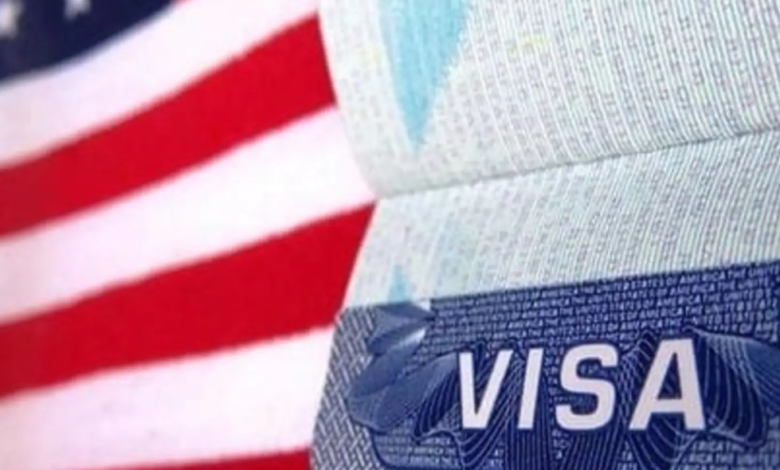Temporary Visa Holders In The US Are Scrambling To Find New Jobs Due To Tech Layoffs

Numerous individuals living in the United States on temporary visas now have limited time to locate new employment and face the possibility of having to leave the country as a result of the widespread tech layoffs.
Many claims that the firms who sponsored them are providing them with insufficient advice.
The H-1B visa program has long been used by the technology sector to fill its demand for personnel in specialized sectors like computer science and engineering. In the last three years, at least 45,000 H-1B workers have been sponsored by Amazon, Lyft, Meta, Salesforce, Stripe, and Twitter, according to a Bloomberg analysis of data from the US Citizenship and Immigration Services.
At least 350 immigrants have been impacted by the most recent wave of job cuts at just two businesses, according to reports filed by employees at Meta and Twitter. Only 60 days are allowed for H-1B visa holders who lose their jobs to remain legally in the US without finding new companies to sponsor them.
Many individuals with H-1B visas have been residing in the US for many years while seeking naturalization. Now that the employment market has become more competitive, they are desperately looking for work alongside thousands of other tech employees. Some people have mortgages, college loans, and school-age children.
Recruiting is normally slower around the holidays, and many large firms have stopped hiring altogether.
Job seekers in a rush have turned to their professional networks to find a way to survive as deadlines loom. On LinkedIn, some people have made direct appeals, sparking threads with hundreds of answers, many of which include employment possibilities both domestically and abroad. Social media is rife with crowdsourced spreadsheets and recommendations.
In order to avoid upsetting their former employers or jeopardizing their job search, more than a dozen recently laid-off employees spoke with Bloomberg on the condition of anonymity. One former Twitter designer, a 30-year-old who has lived in the US for 14 years and was fired in November along with 3,500 coworkers, claimed she had long fantasized about this scenario and had lived in fear of having to pack up everything and flee the country on short notice.
Employers in the US are now able to hire foreigners with college degrees in technical professions where there has historically been a dearth of Americans because of the H-1B program. With the possibility of renewals, visas are provided for three years. The annual cap on admissions is 85,000, and there is a significant demand for spots, particularly among Indian professionals.
According to information from the US Department of Labor, the median pay for an H-1B employee in the third quarter was US$106,000 (S$146,000). However, top tech company employees earn significantly more.
Without taking into account sizeable bonuses and stock options, the median salary for an H-1B employee at Meta, Salesforce, and Twitter was about US$175,000 (S$241,000).
Indians have been particularly hard hit by layoffs as they frequently have temporary visas longer than other foreign groups due to delays in obtaining permanent residency, or a green card.
While there are about 500,000 Indian citizens on the waiting list, only around 10,000 employment-based green cards are normally available for them each year because each country is typically only permitted to receive 7% of the employment-based green cards awarded each year.
According to Senate research, Indians applying in 2020 could end up waiting up to 195 years for a green card. Chinese workers had to wait 18 years, compared to less than a year for everyone else.
One H-1B visa holder from India had just purchased a home in Seattle as the year began so that they could begin working for Meta. He is looking for a company to recruit him and sponsor his visa transfer eleven months later.
Companies have provided varying degrees of support for immigrants because they are required to pay for H-1B workers to return to their home countries if they are forced to leave the US after losing their jobs.
Five former Twitter employees who were on temporary visas claimed that the firm had not offered much support and that it was unclear when their 60-day grace period would begin. A company representative advised one employee who questioned the law’s interpretation to locate their own counsel when they requested clarification. An inquiry for comment from Twitter received no response.
CEO of Meta Mark Zuckerberg said that visa holders will receive notice periods — which can buy them extra time before their visa clock starts ticking — and advice from specialized immigration consultants after announcing 11,000 job layoffs this month. One former Meta employee, however, said that the consultation was ineffective. Find your own lawyer, the attorney had advised, was similar to Twitter’s suggestion. Others expressed their gratitude for the help.
Some people have already given up. A 34-year-old product manager who was fired by a sizable fintech company said he is halfheartedly looking for work in the coming weeks but has largely decided to return to India.
News Mania Desk






